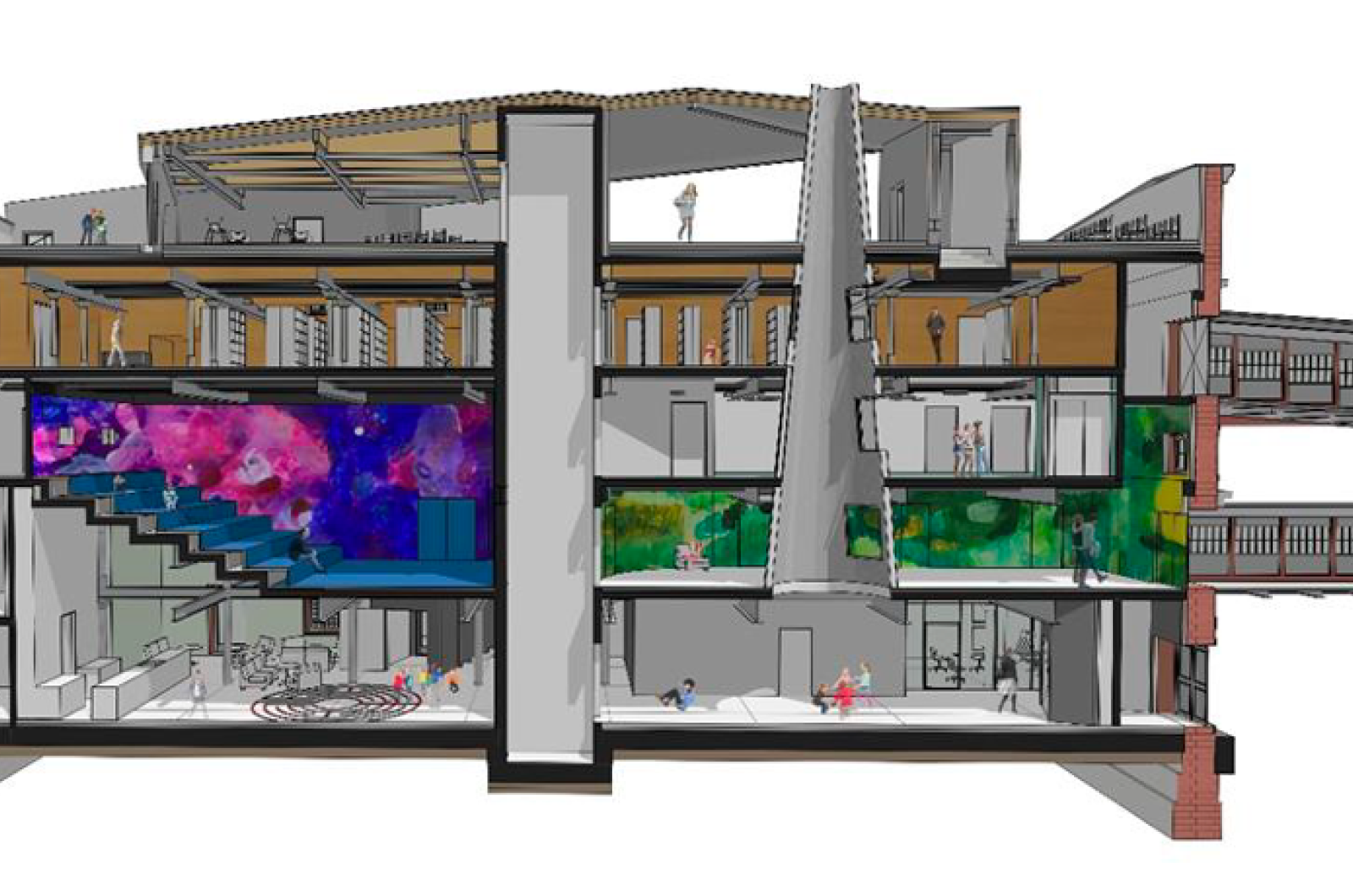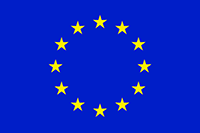Children's House
The reconstruction of the Brick House and its transformation into the Children’s House, makes an integral part of the project Revitalisation of the Benčić – Brick and T-building Complex, in favour of which, following an invitation to tender issued by the Ministry of Regional Development and EU Funds the amount of 10.000.000 EUR was approved as a grant under the European Regional Development Fund, while the total value of the complete project amounts to 21.000.000 EUR.
The brick building was built in the late 19th century as part of what was then the Royal Hungarian Tobacco Factory on the site of two older buildings. According to the complex presentation dating back to 1875, there were two smaller buildings on the site of today’s Brick Building, one of which was a mill near the Brajda creek. It was originally connected by bridges to the H building on the southern side and the presently demolished building on the northeast side. After World War II, the brick building became part of the newly established marine machinery factory “Rikard Benčić”. After the failure of the factory, the building was abandoned in the 1990s. Its architectural and historical value lies in the fact that it represents the industrial architecture of the late 19th century and the typology of warehouse buildings of that time.
The Children’s House in Rijeka is the first such house in Croatia, and the nearest house of similar purpose is in Ljubljana (Hiša otrok in umetnosti).
The specific of the Children’s House lies in the method of work with children and parents who will spend there their time in the areas of work and topics that children will be able to deal with there.
Animation films production in a film studio, video reportages production, music creation in a music studio, playing video games on the big screen of the projection hall, video games production, design production and its printing via 3D printers, a narrative theatre in a small amphitheatre on the house roof, a “sweet “interactive baby theatre, puppet making, a “sensory” theatre for children with special emphasis on work with children with developmental disabilities, specially adapted film projections for children with developmental disabilities, daily film projections for children, a playroom in the library… are only some of the planned activities that the Children’s House in Rijeka will gather and offer to children and their parents, once it has been constructed and completed.
Main results and impacts produced by the initiative on the selected MESOC crossover themes
Children's house act as the cultural innovation. All programs, workshops and activities carry out in the Children's House are jointly designed, organized and implemented by four Rijeka cultural institutions Art-kino, Rijeka City Library, Rijeka City Puppet Theater and the Museum of Modern and Contemporary Art. And the basic principle of the Rijeka Children's House is synergy and multidisciplinarity, which means that all institutions are intertwined and connected not only in mutual cooperation, but also in program content in which puppeteers tell stories from books in the children's book department Stribor, book lovers enter into the world of 3D printing… and all that. Because the culture in the Children's House is not just content that is watched, listened to or read, it is content that children design, create, share and receive.
The values behind this flagship suggest that children growing up in a creative environment could become the leaders and creators of a better and brighter future world.
In this context, the aforementioned portion of the ECoC programme emphasises the imagination and fantasy that spark creativity in children. “Children’s House” programmes are designed for all young magicians with a restless artistic spirit and all those who are yet to become ones. They are small, but big, and when they grow up, they will build a society of active and aware citizens. The Children’s House, both the programme and the building, creates a frame in which children have the right to develop their potential and to express themselves. “With them, not just for them” is a slogan that guides us in the design of this flagship.
Other relevant impacts
"This initiative was defined through the city's strategic documents, as well as the application book of the European Capital of Culture. funds are provided in the city budget. The City of Rijeka has received EU funding for the renovation and construction works in the form of a grant as part of the “Revitalisation of the Benčić complex – the Brick and the T-shaped Buildings” project.
Even before the building was opened (March, 2020), extensive programme has been already ongoing and include the Tobogan Festival featuring a plethora of workshops and spectacular open-air events, which are shaping up to be a quite an attractive affair, following three years of preparations.
An array of programmes is dedicated to the character and feats of the legendary Professor Balthazar, such as the large-scale interactive exhibition and the art intervention on the ship Uragan. Balthazar in Rijeka will delight both the kids and the grown-ups who remember him from when they were children. Then there is a series of puppet plays, such as the Bomboniera variete! cabaret, film workshops and the Month of Good Children’s Books festival.


